1 . What is CNCF

The Cloud Native Computing Foundation (CNCF) is a Linux Foundation project that was founded in 2015 to help advance container technology and align the tech industry around its evolution.
The CNCF hosts critical components of the global technology infrastructure. CNCF brings together the world’s top developers, end users, and vendors and runs the largest open-source developer conferences.
2 . Cloud-Native Technology
Cloud-native technologies empower organizations to build and run scalable applications in modern, dynamic environments such as public, private, and hybrid clouds. Containers, service meshes, microservices, immutable infrastructure, and declarative APIs exemplify this approach.
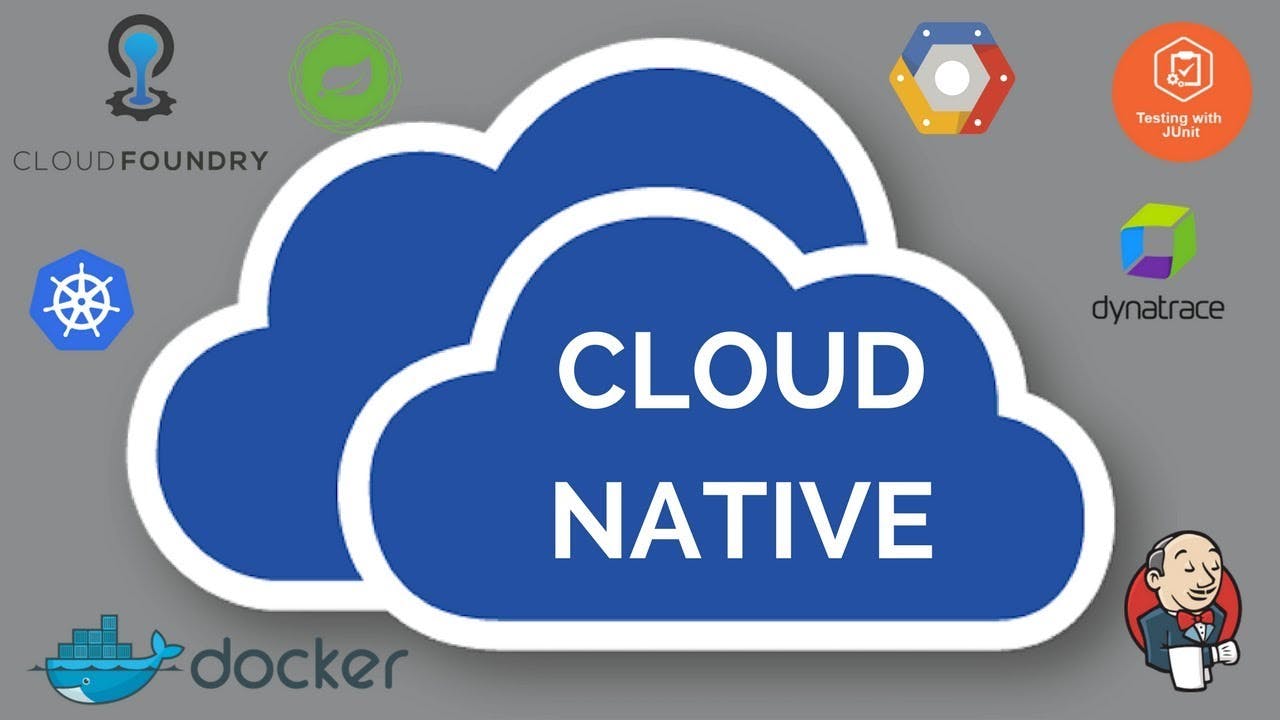
Cloud Native means a cloud-native application that can run for modern functions or depends like deploy zero downtime, self-healing etc. The application that follows all these principal and applications that run on top of Kubernetes are called cloud Native applications.
3 . CNCF Landscape
The Cloud Native Landscape project attempts to compile, categorize, and organize all open-source projects and proprietary products that can benefit cloud-native applications. The Cloud Native Computing Foundation (CNCF) maintains the cloud native landscape project. Basically this is an interactive map that consolidates all cloud-native offerings and provides information about each category, product, and project.

Basically, there are six Categories of the Cloud Native Landscape
Provisioning:—includes tools required for the foundational infrastructure upon which the cloud environments and supporting technologies will function.
Runtime:—includes tools necessary to run containers in cloud-native environments.
Orchestration & Management:—includes the tools necessary to orchestrate and manage containers, applications, and resources.
App Definition & Development:—includes tools that enable applications to send and store data and tools needed to build and deploy applications.
Observability & Analysis:—includes tools that help monitor applications and alert stakeholders of any issue.
Platforms:—includes platforms that bundle multiple functionalities and tools. These platforms help configure and fine-tune multiple tools to help organizations more easily adopt cloud-native technologies.
4 . CNCF Projects
CNCF technology projects are cataloged with a maturity level of Sandbox, Incubated, and Graduated.
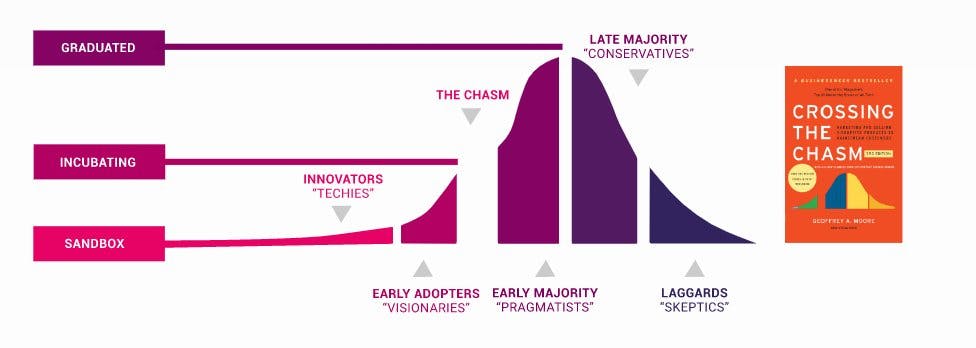
CNCF projects have a maturity level of the sandbox, incubating, or graduated, which corresponds to the Innovators, Early Adopters, and Early Majority tiers of the Crossing the Chasm diagram. The maturity level is a signal by CNCF as to what sorts of enterprises should be adopting different projects. Projects increase their maturity by demonstrating their sustainability to CNCF’s Technical Oversight Committee: they have adopted, a healthy rate of changes, and committers from multiple organizations have adopted the CNCF Code of Conduct;
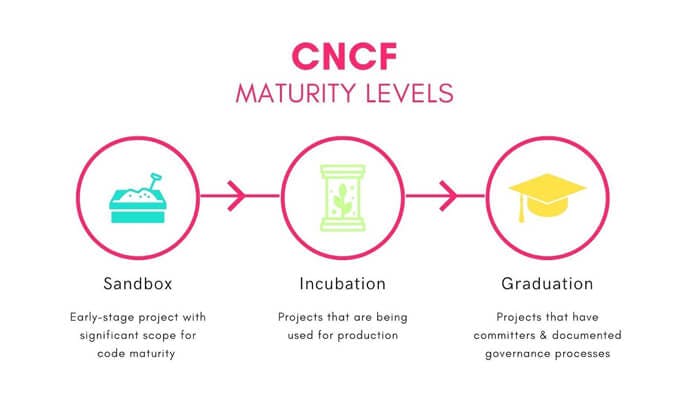
Sandbox
The core work is managing all projects in the CNCF, in the sense of evaluating their maturity level. Here are two main things in this situation, one is different types of maturity levels and also the biggest peak comes from the sandbox. This is a really low-barrier entry point project to join the CNCF.
Incubating
This is where starting to interact point with the rest of the project in the community and reach out to end users in a more nice way. From here once they think they have been maturing enough, they can apply for incubation. this is really where most of the due diligence is happening, where we do a more thorough evolution of the project eventually, then they go to the vote and if everything is looking ok they go for incubation. And finally, after they move to incubation.
Graduated
After some times on incubation, they think they mature they evaluate the project to become sustainable in the long term they move to graduation.
5 . CNCF Trail Map
This Cloud Native Trail Map is a recommended process for leveraging open-source, cloud-native technologies. At each step, you can choose a vendor-supported offering or do it yourself, and everything after the step Orchestration and application definition is optional based on circumstances.
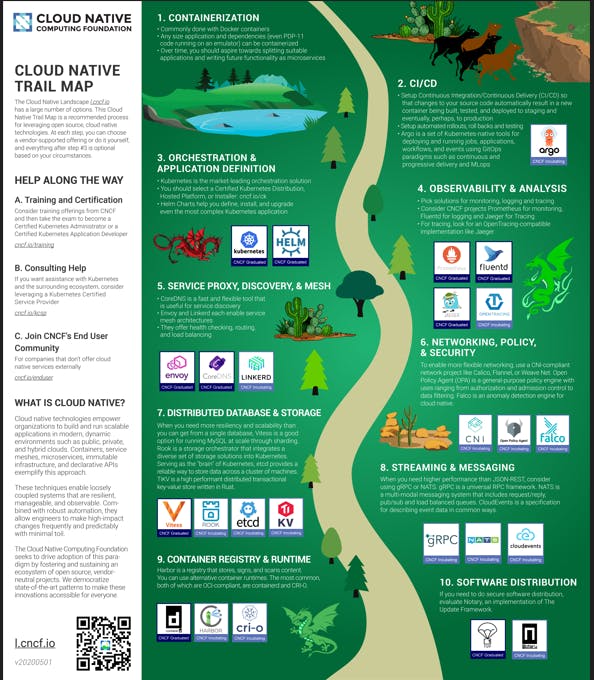
6 . CNCF Mentorship Program
The Cloud Native Computing Foundation (CNCF) participates in a variety of mentoring programs. CNCF is a great place to spend time learning, coding, documenting, participating, and contributing. We look forward to your application and your project ideas.

Participation in the CNCF Mentoring Program is open to anyone interested in learning about cloud-native technologies and contributing to open-source projects in the ecosystem.
Program | Purpose |
| |
| |
| |
|
7 . CNCF Events
The KubeAcademy organized and ran the inaugural KubeCon conference in November 2015 in San Francisco. Shortly after the Linux Foundation’s Cloud Native Computing Foundation (CNCF) began hosting KubeCon. The Cloud Native Computing Foundation's flagship conference gathers adopters and technologists from leading open-source and cloud-native communities every year. Since then KubeCon expanded outside of North America to Europe and China.

8 . CNCF Ambassador Program

Cloud Native Ambassadors (CNAs) are credible advocates for the cloud native ecosystem, driven by their passion for CNCF technologies and projects, as well as furthering the mission of open source. Ambassadors are an extension of CNCF, furthering the mission of “making cloud native ubiquitous” through community leadership and mentorship.
9. History of CNCF
The CNCF was founded in 2015 by Google and the Linux Foundation to help advance container technologies and align the technology industry around the evolution of this new field.

Kubernetes is the first project that joined the cncfCNCF. Initially created by Google for internal use, Borg (the project’s original name) developed and used the technology to orchestrate containers. When Google open-sourced the project, it was rewritten in Go, renamed Kubernetes, and donated to the CNCF.
Kubernetes was only the beginning. Soon, a wave of technological advancements ensued, and many other cloud-native projects joined the CNCF. In 2016, a program was announced to establish qualified representatives of all technologies governed by the CNCF. Today, more than 450 member organizations support the CNCF.
10 . Get Involved
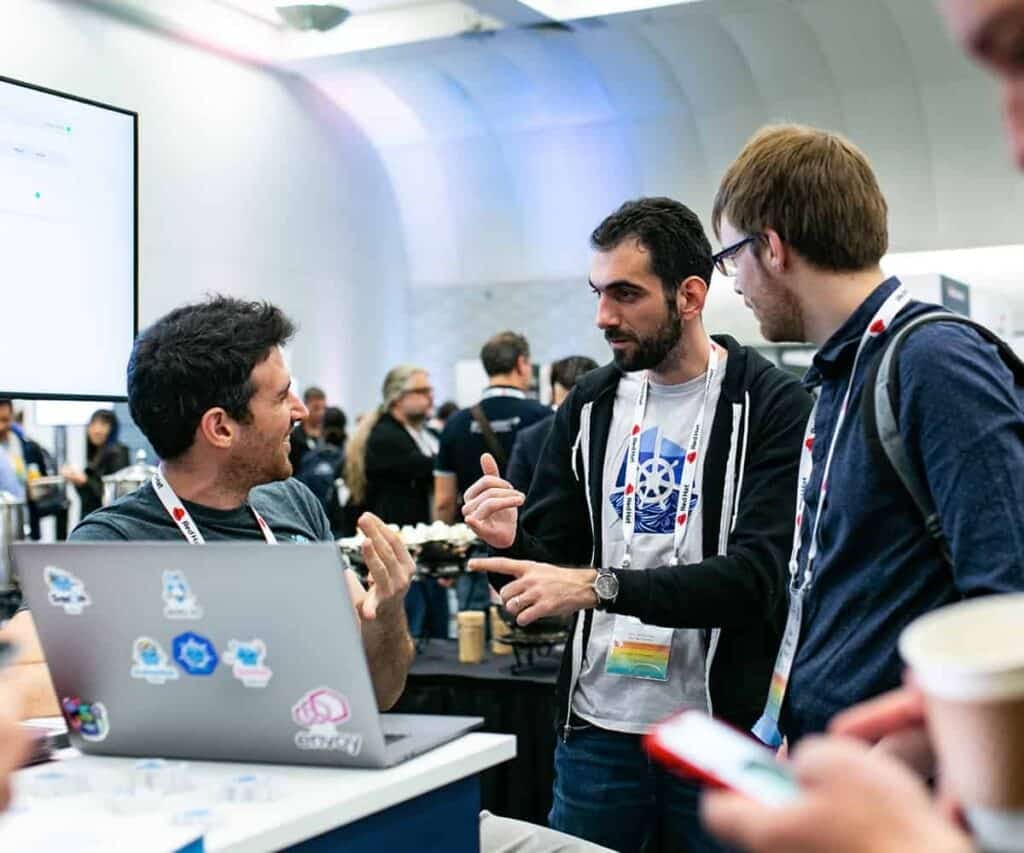
11 . Resources
That's all for this blog, I hope you will learn something new. And feel free to share your thoughts and feedback, Thanks for reading.
Feel free to reach out to me 👀
Twitter 🖱
LinkedIn 🖱
Github 🖱